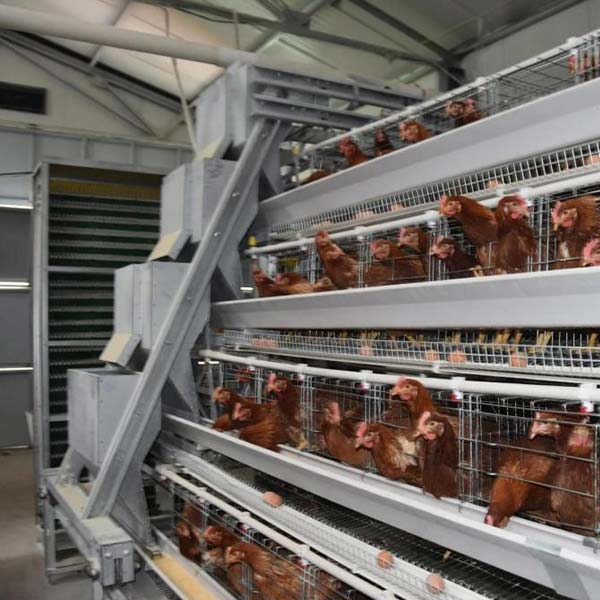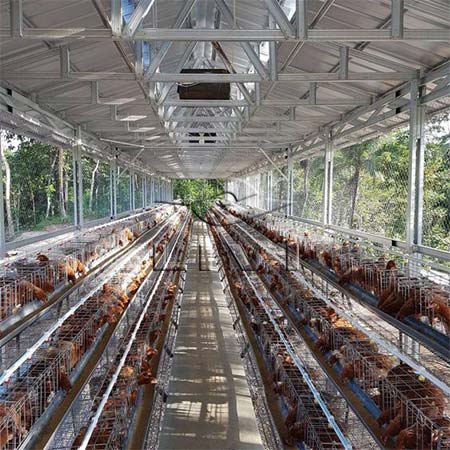Ghana Poultry Farming Layer Chicken Cage System
Poultry farming is a crucial aspect of Ghana’s agricultural industry, providing a significant source of income and nutrition for many households. In recent years, the layer chicken cage system has gained popularity among poultry farmers in Ghana due to its numerous benefits and economic viability. In this article, we will delve into the details of the Ghana poultry farming layer chicken cage system, exploring its components, benefits, installation and maintenance, economic viability, comparison with other poultry farming systems, and conclude with recommendations.
Introduction to Layer Chicken Cage System in Ghana
The layer chicken cage system is a modern poultry farming method that involves housing layers (hens) in specially designed cages. This system is designed to provide a conducive environment for the layers to lay eggs efficiently and to ensure their overall well-being. In Ghana, the layer chicken cage system has gained traction due to its ability to maximize space utilization, optimize egg production, and streamline management practices.
Benefits of Layer Chicken Cage System
One of the primary benefits of the layer chicken cage system is its ability to maximize space utilization. By housing layers in cages, farmers can efficiently utilize limited space, making it suitable for both small-scale and large-scale poultry farming operations. Additionally, the cage system minimizes egg breakage and floor eggs, resulting in higher egg quality and increased productivity.
Furthermore, the layer chicken cage system promotes better hygiene and disease control. The separation of birds in individual cages reduces the spread of diseases and parasites, leading to healthier flocks. This ultimately translates to reduced veterinary costs and higher profitability for poultry farmers.
Components of Ghana Layer Chicken Cage System
The Ghana layer chicken cage system consists of several key components, including the cages themselves, feeding and watering systems, egg collection facilities, and waste management infrastructure. The cages are typically constructed using durable materials such as galvanized steel wire, providing a secure and comfortable living space for the layers. The feeding and watering systems are designed to ensure that the layers have access to clean water and a balanced diet at all times. Additionally, the egg collection facilities are strategically integrated into the cage system for easy retrieval of eggs, minimizing breakage and contamination. Waste management infrastructure such as manure removal belts or trays ensures that the poultry environment remains clean and hygienic.
Installation and Maintenance of Layer Chicken Cage System
The installation of a layer chicken cage system requires careful planning and expertise to ensure that the infrastructure is set up correctly. It is essential to engage experienced poultry equipment suppliers or technicians who can provide guidance on the layout and installation process. Regular maintenance of the cage system is also crucial to ensure its longevity and optimal functionality. This includes routine cleaning, inspection of equipment, and prompt repairs or replacements as needed.
Economic Viability of Layer Chicken Cage
From an economic standpoint, the layer chicken cage system offers significant advantages to poultry farmers in Ghana. The system’s ability to optimize egg production, minimize feed wastage, and reduce labor costs contributes to higher profitability. Additionally, the efficient use of space allows farmers to scale up their operations without significant investments in land or infrastructure. The consistent production of high-quality eggs also ensures a steady income stream for poultry farmers.
Comparison with other Poultry Farming Systems
When compared to traditional free-range or deep litter systems, the layer chicken cage system demonstrates clear advantages in terms of productivity and resource utilization. While free-range systems allow birds to roam freely, they are more susceptible to predation, disease, and erratic egg laying patterns. Deep litter systems require more space and entail higher labor and material costs for waste management. In contrast, the layer chicken cage system provides a controlled environment that maximizes egg production, minimizes disease risks, and streamlines management practices.
Conclusion
In conclusion, the Ghana poultry farming layer chicken cage system presents a viable and efficient approach to egg production. Its numerous benefits, including space optimization, improved hygiene, and economic viability, make it an attractive option for poultry farmers. However, it is essential for farmers to adhere to best practices in installation, maintenance, and flock management to maximize the system’s potential. As such, we recommend that aspiring poultry farmers in Ghana consider investing in the layer chicken cage system for sustainable and profitable egg production.
Ghana poultry farming layer chicken cage system offers a modern and sustainable solution for egg production in the country. With the right knowledge and resources, poultry farmers can leverage this system to enhance their productivity and contribute to Ghana’s agricultural development.


